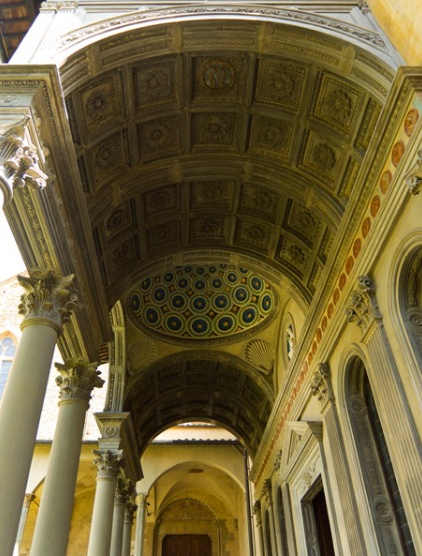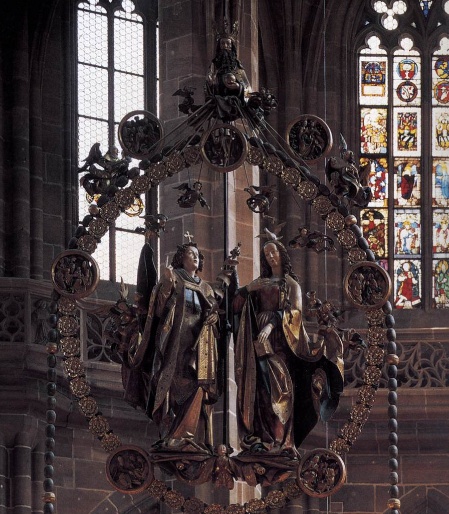The Renaissance and Gothic periods, though parallel in time, exhibit distinctly different worldviews in their artistic and architectural styles. The Pazzi Chapel in Florence and the Choir of St. Lorenz in Nuremberg, though almost contemporaneous, appear as if they belong to different worlds and centuries.

The Pazzi Chapel, with its grooved square attached columns and Corinthian capitals, showcases the Renaissance's revival of classical forms and its pursuit of symmetry and minimalist aesthetics. This architectural style emphasizes a balance between horizontal and vertical axes, creating a visual effect that is simple, serene, and stable. Additionally, Luca della Robbia's glazed terracotta relief of human figures, skillfully set within circles, embeds transient life within eternal geometric shapes. This design not only demonstrates strict formality and spirituality but also reflects a profound appreciation for mathematics and geometry.

In contrast, St. Lorenz's Church exemplifies the pinnacle of Gothic architecture. Its hexagonal pillars and pointed arches, along with the intricate tracery of crossing ribs, create a complex and liberating sense of depth. Although the building maintains symmetry in its floor plan and is defined mathematically, the line patterns vary subtly with each viewpoint, producing an almost otherworldly, dreamlike effect. The later addition of Veit Stoss’s sculpture group "Annunciation" further enhances this fantastical visual experience.

These two starkly different architectural styles not only illustrate their respective era’s pursuit of aesthetics and form but also their distinct interpretations of religiosity. Renaissance churches, often considered non-religious in architecture, actually express a fervent enthusiasm for Christianity through a balance and harmony between parts and the whole, much like the human body created in God's image. As Gianozzo Manetti stated, the purity and asceticism of such buildings reflect the self-evident truths of Christianity, akin to mathematical laws.
In summary, the Pazzi Chapel and St. Lorenz Church are not only exemplary of their respective time’s architectural styles but also symbolize two distinctly different worldviews. Through the comparison of these two buildings, we not only gain a deeper understanding of the artistic and architectural philosophies of the Renaissance and Gothic periods but also appreciate how they convey different interpretations and pursuits of cosmic order and divine truth through space and form.